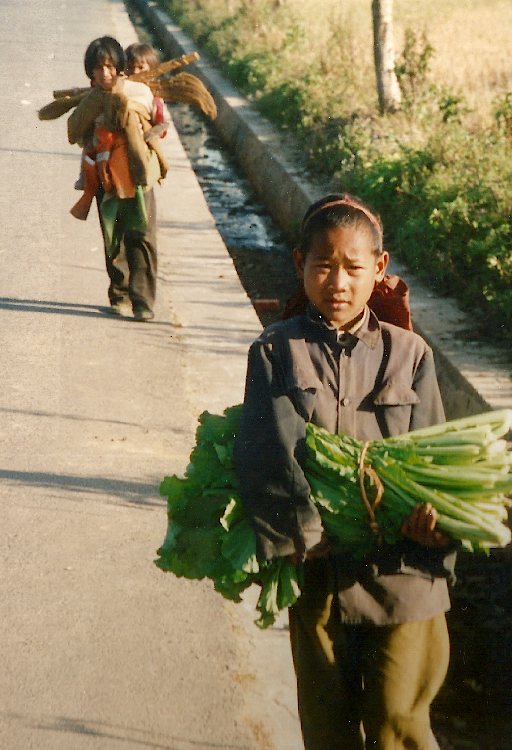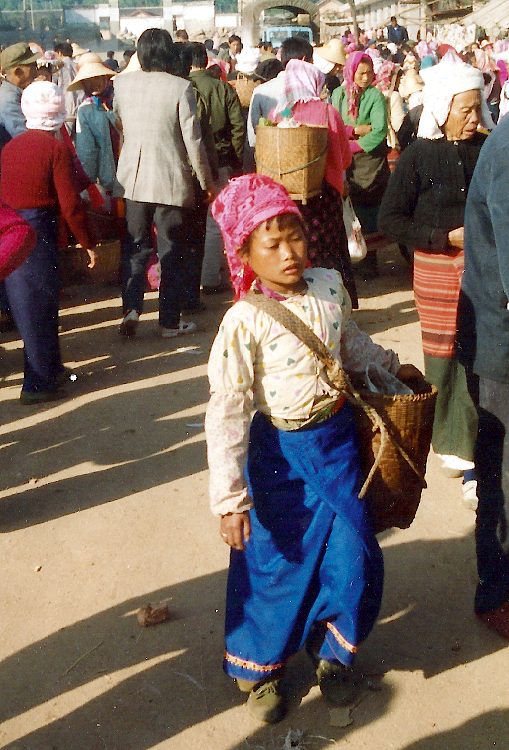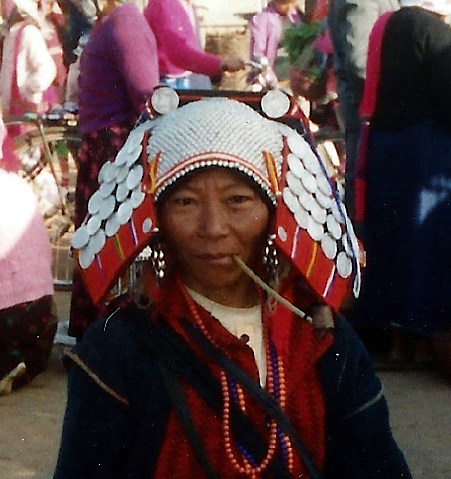
Xishuangbanna
This was a trip I did in December 1992 in South West China. Xishuangbanna is an autonomous prefecture in China’s southwestern Yunnan province, bordering Myanmar and Laos. It’s known for Dai culture, distinctive temples and tropical rainforests.
I was living in Hong Kong at the time and went with my friend Ingrid. First up we got the overnight ferry to Guangdong, headed to the airport and then got the flight to Kunming, the capital of Yunnan province. That was the easy part, now we knew things were going to get tougher. We needed to get another flight to Jinghong the capital of Xishangbanna but we could only buy tickets in Kunming. We visited the CAAC (China national airways) who sent us on to a number of travel agents who told us the flight was fully booked. Eventually we left the final office disconsolate that we would have to embark on a two and half day day bus trip! And then at the last moment someone called after us. “Jinghong, tomorrow? Come with me!”. Although the tickets were almost twice the price of official tickets (280Yuan) we were on.
We booked into the Camellia Hotel and then went for a stroll around town. Although now, Kunming is a huge modern metropolis, in those days it was quiet and manageable to walk around. The streets were full of bicycles. I had been to Kunming the previous year and the only difference was that now there was a new Holiday Inn. A taste of things to come. I noted that that night we had a pleasant meal of roast potatoes, satay and rice. An interesting mix.



The following day we had a few hours to kill before the flight so we had another wander. Kunming is known as the city of eternal spring and at 2000 metres above sea level it is very often sunny and dry but very crisp.


We got to the airport in the early afternoon and unsurprisingly the flight to Jinghong was delayed. We eventually left at 7.30. There were a few other foreigners on the plane including a Dutch couple who had been helping to build a hospital in Tibet and were now having a short holiday before heading home.
Although it was pretty cool in Jinghong we had definitely arrived in South East Asia. There was green foliage everywhere including palm trees. However, the first wildlife we saw was while entering the airport buildings – the biggest rat I had every seen. We got the bus into town and checked into the Banna Hotel (everything in Jinghong seemed to be called Banna – the short form of the area Xishuangbanna. According to our gidebook the hotel was, “a traveller’s delight and a relic of colonial days” it was certainly a relic, our room was pokey and no matresses on the beds. We went for a stroll. There were pool tables everywhere in the street and a few kerbside video games.
We were tired after the stress and sterain of travelling and soon to bed. Like most days of this trip we awoke to a rather misty morning. After a rather fitful night, the first thing we did was check out of the Banna hotel and move into the Banna Mansion hotel – definitely a step up at 85 Yuan ($15) a night. We were on the 10th floor with a good view of town, a rather somnolent place but quite pleasant.
We hired bicycles and headed a little out of town to the Dai village supposedly where the ethnic minority people lived. We went a bit further to the river, a tributary of the Mekong, which flowed through the area. We sat and watched the ferryman. All he had was a long thin canoe and he got across the river by pulling on a rope.
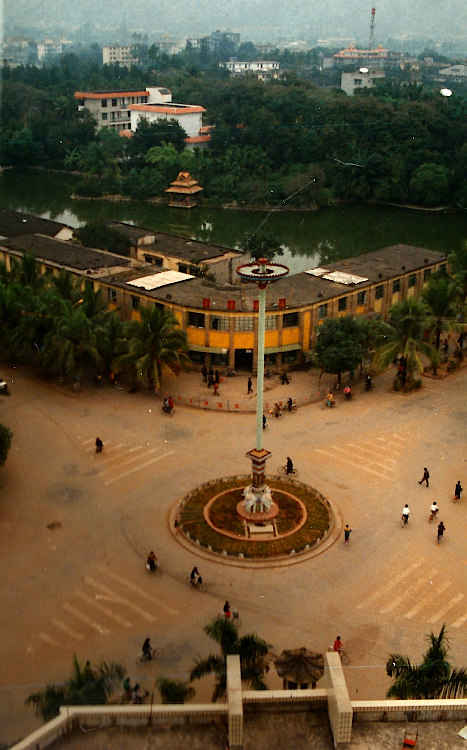









The following day, on the advice of the guy in the hotel, we decided to cycle to Menghai – 56kms but flat all the way he said. It was OK for the first 30mins then the road just kept climbing and I developed a problem with a pedal. It was no good, I had to stop. We managed to flag down a couple in some sort of farm vehicle so we climbed in the back and continued to Menghai.
Note: I am writing about this trip in 2020, 28 years after doing it! the guidebook we used is long gone but I did manage to find an old lonely planet which says, “unless you have a good bike with gears, cycling to Menghai and Menghun is not a real option. The road up to Menghai is so steep that you’ll end up pushing the bike most of the way” Hmm. Interesting. Also reading this guidebook there are many more interesting places to see than we saw but I guess there are also more tourists – that’s the price you pay for being a tourist pioneer I guess.


We stopped at Menghai for lunch and I got someone to fix my pedal. There was no shortage of bicycle repair places in those days as it was the main form of transport. But then we decided to press on to our ultimate destination – Menghun. It was 26kms but pretty flat and my pedal managed to stay on. It was the best part of the day, glorious sunshine but not too hot and across a wide flat valley and loads of wild flowers bordered the quiet road.




Menghun seemed like an attractive little town and we soon found a bed for the night in a small basic place. They even had a shower with tepid water. We had a quick wander around to find something to eat but we were exhausted and were in bed by 8pm.
The reason we came to Menghun was market day. We woke up refreshed. There was a thick mist enveloping the village and it was pretty nippy at first but the market was great. Lots of hustle and bustle and hordes of hilltribe people along with their pigs, buffaloes and goodness knows what else. The area is famous as the homeland of the Dai ethnic minority people but there are 13 other major ethnic groups in the area and plenty of them were represented at the market.



-

Ake lady -




-

-

Aini lady


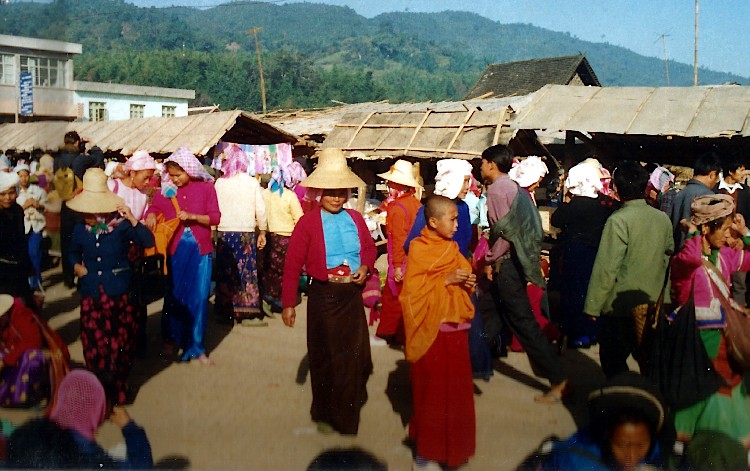
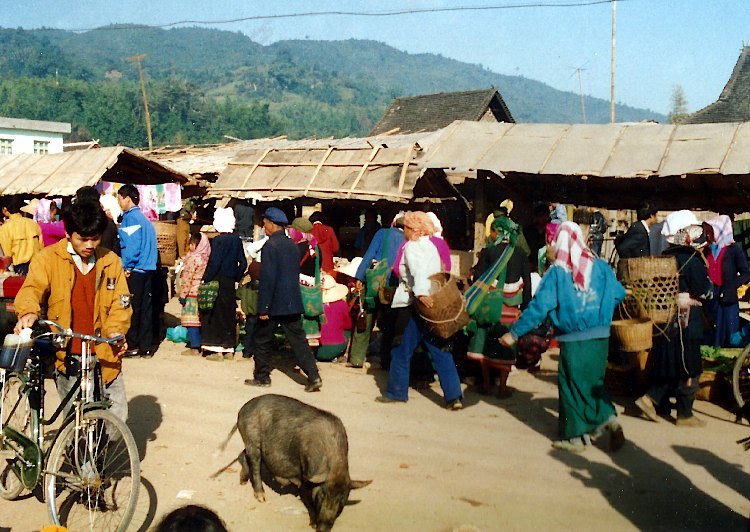

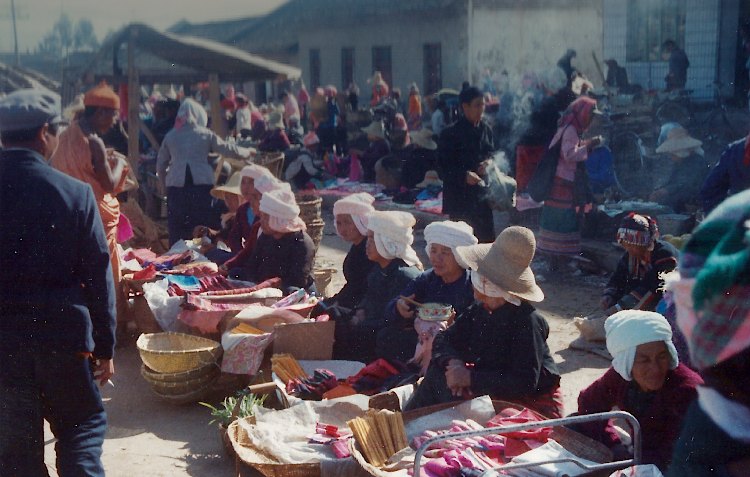


After the market we headed up the hillside to the pagoda which provided great views of the town and across the rice paddies to the river.

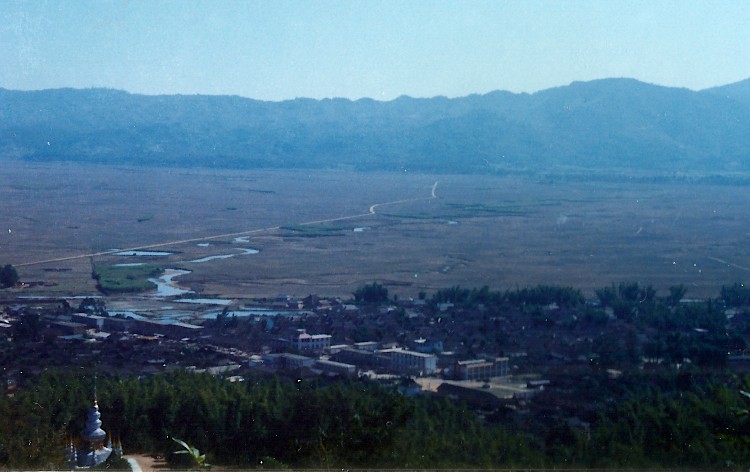

A word about local restaurants. That night we found one like all the others. There are usually only two or three tables and a “kitchen” to the side which is itself only a fire with a large wok. Next to it a cupboard containing the food – various pieces of meat – liver, chicken, beef? along with cabbages, chillies, spring onions, peas or beans and maybe mushrooms. That night’s restaurant was quite posh in that it also had a fridge, and whenever it came on the light bulb hanging over our table dimmed.
After visiting the bike repair shop the previous day I was hopeful I wouldn’t have any further mechanicals so we set off early into the usual heavy fog. Of course it failed. I found another repair man and he managed to break the whole pedal off but somehow we made it back to Menghai. By now the mist had cleared and it was a scorcher. But we stopped a bus and managed to lift the bikes onto the roof and headed back to Jinghong in relative comfort.


For Our next trip we had planned to get the ferry down the Mekong to Menghun but it was no longer running so it was either bike or bus. we slept on it .
Tuesday 15th
Picked up travel permits to Menglun at PSB and headed to bus station. Got bus to Menghan and booked into Dai’s Bamboo House. It was a very musty and dark stilt house. No windows and the beds were just padded blankets on the floor but they had an old grandfather clock. The ticking was the only sound late at night. We went for a walk to the lake which was very serene, peaceful and beautiful. We walked on to the ferry at the Mekhong and back through to the Dai end of town during a deep red sunset. Apparently nowadays this is the Dai minority park. A part of town has been cordoned off and a ticket booth at the entrance and you can stay with a family – like we did. Hmm interesting.
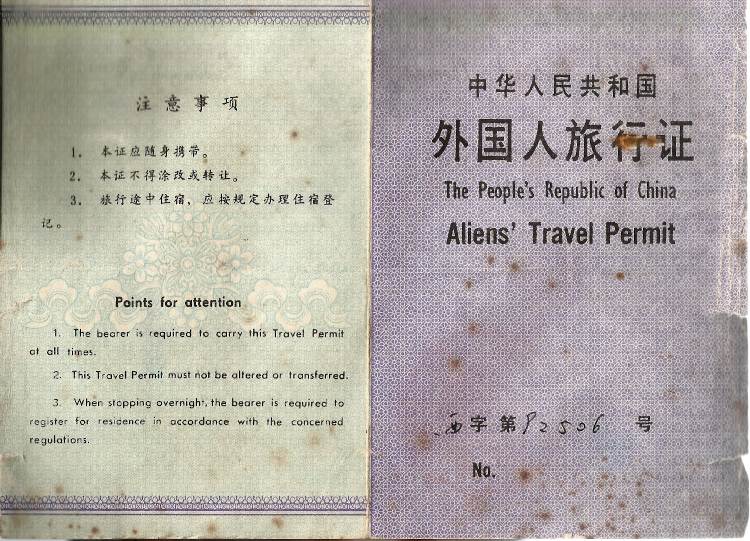




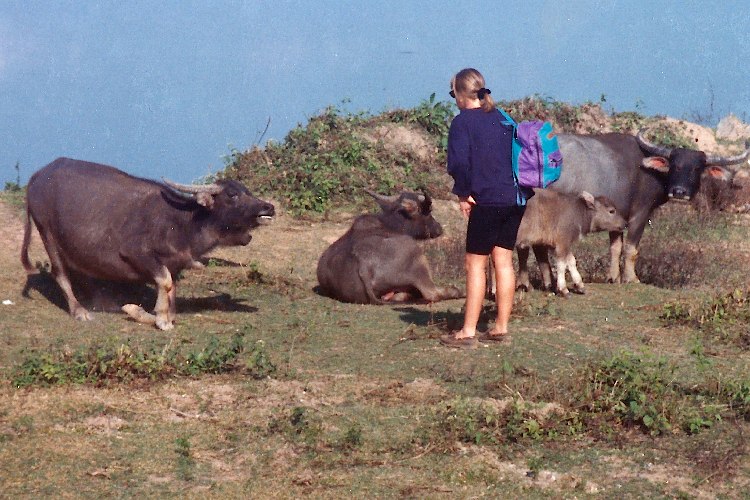
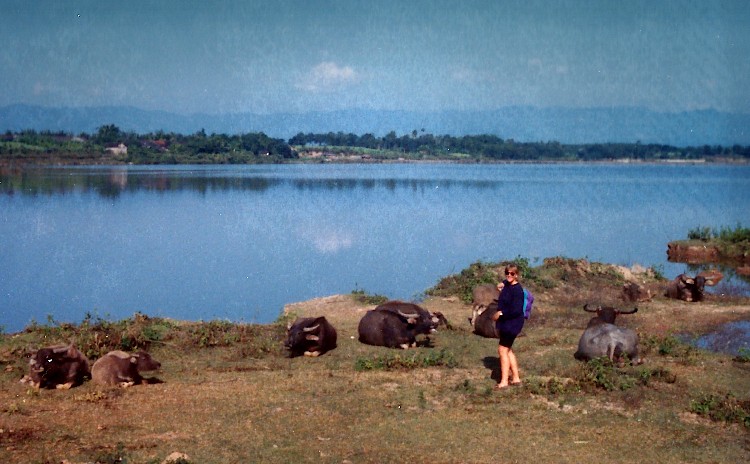
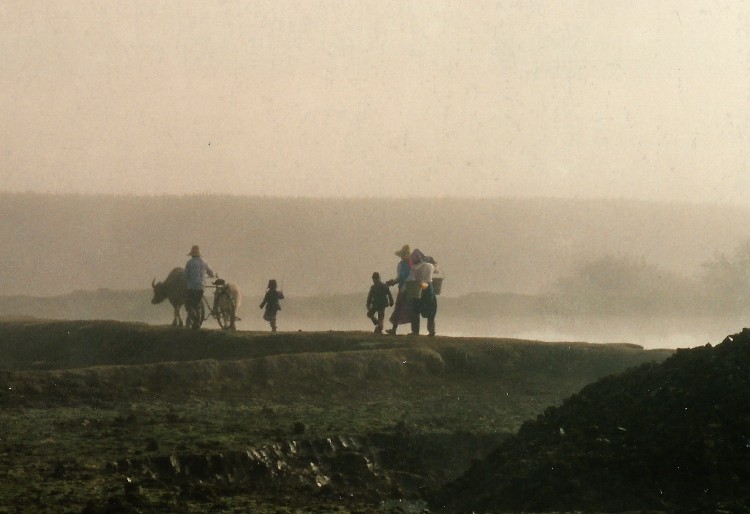
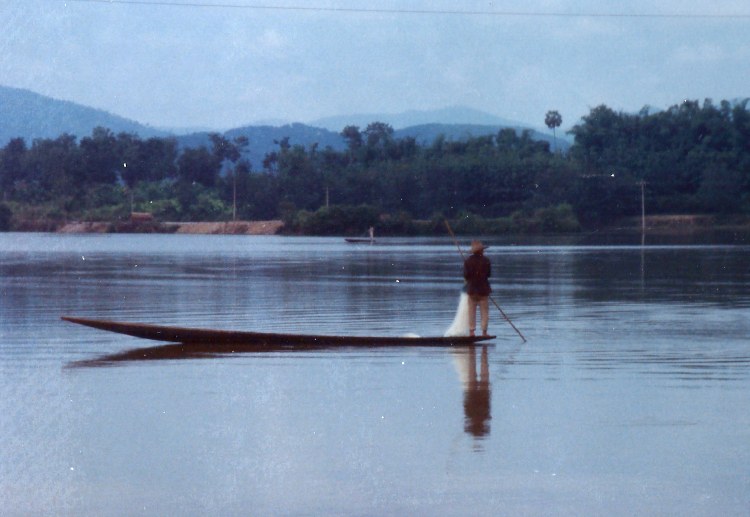
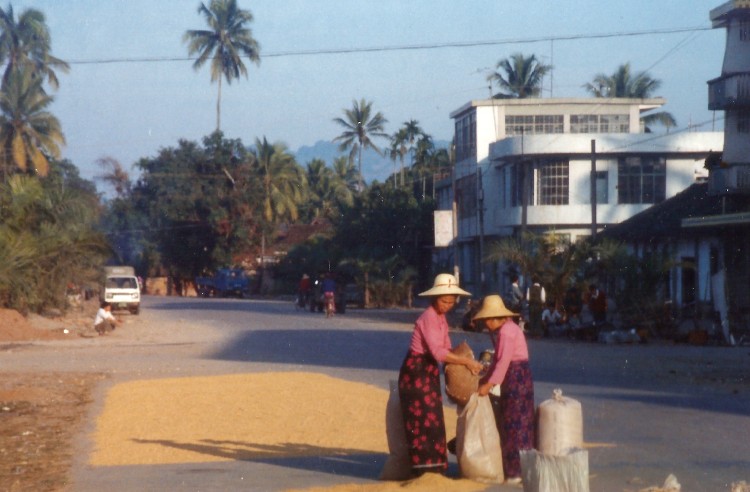
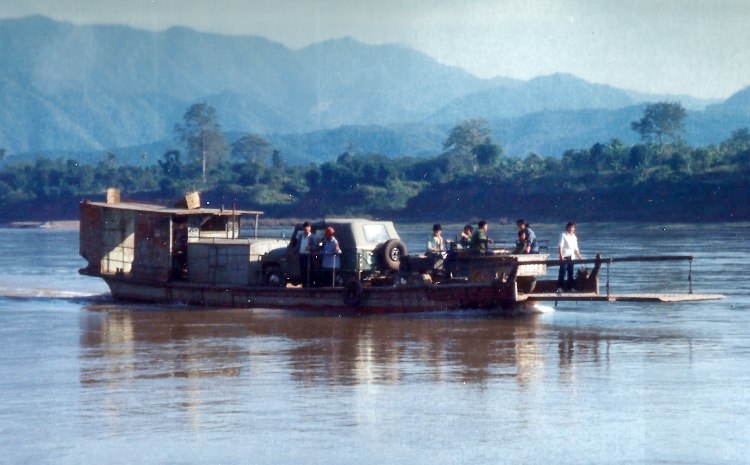
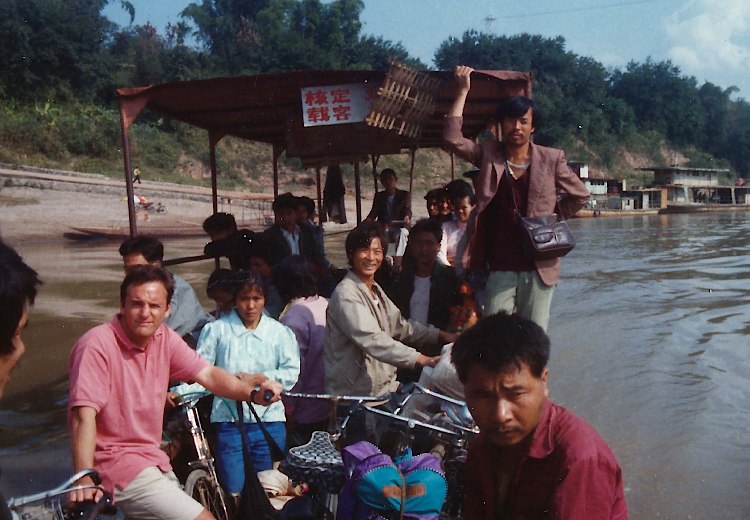
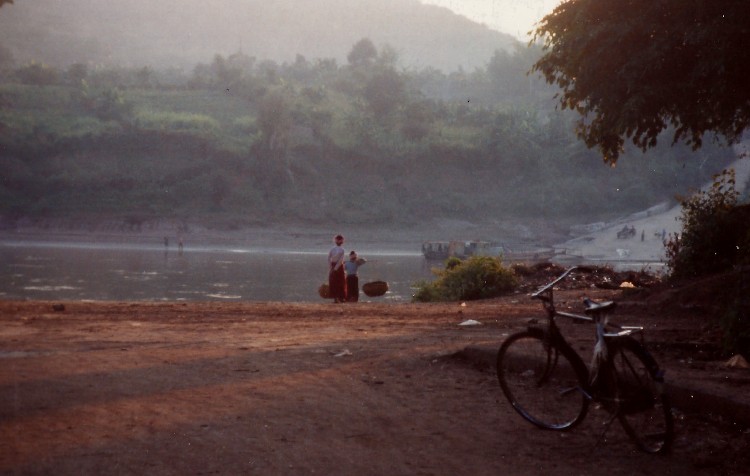
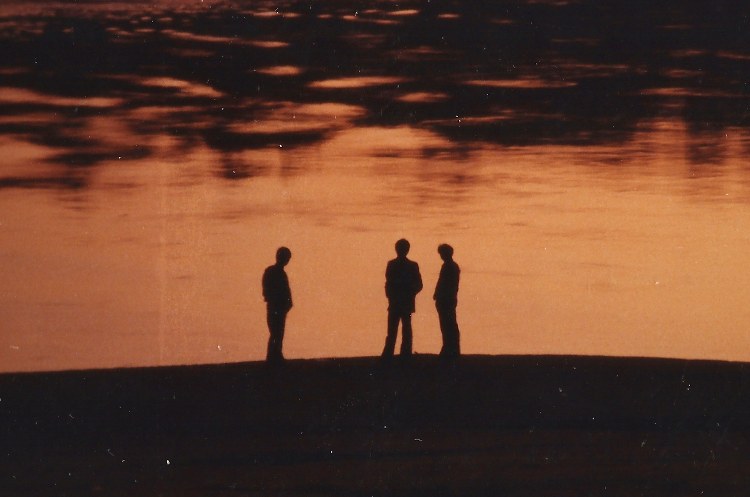
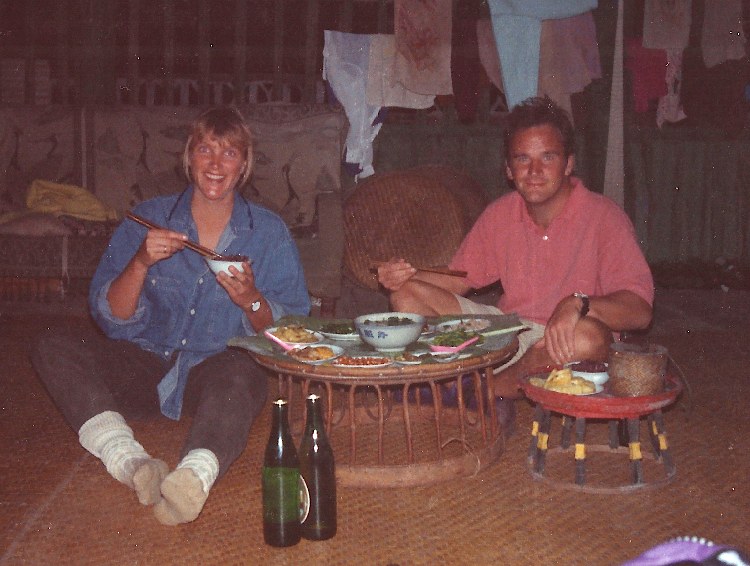
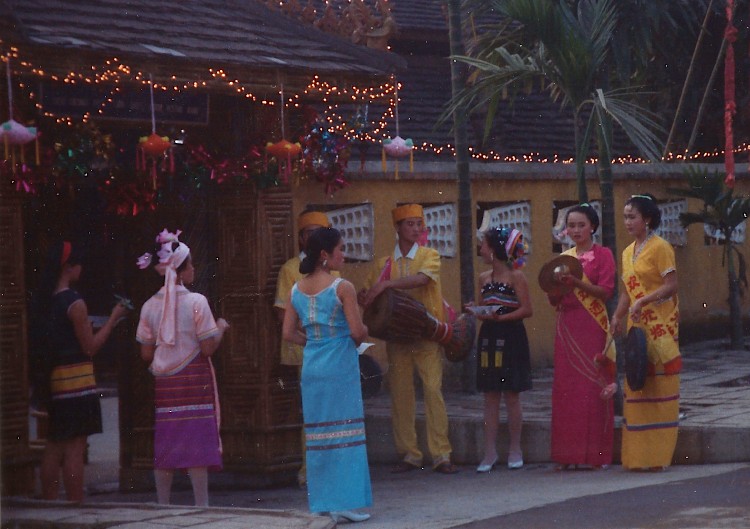
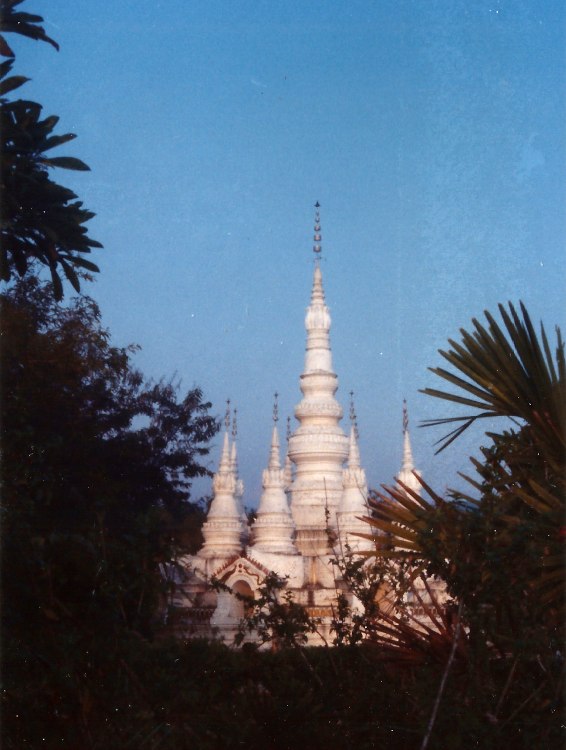
Thursday 17th. We were up with the cockerels and the dawn mist to get the 8am bus from Menghan to Menglun. Very similar to the other towns we had been to. the following day I noted we had to get a couple of buses back to Jinghong. At one of the stops we had a delicious meal of quite spicy meat. Later, wandering the market we saw that it was probably either civet cat or dog which were very popular in that area.
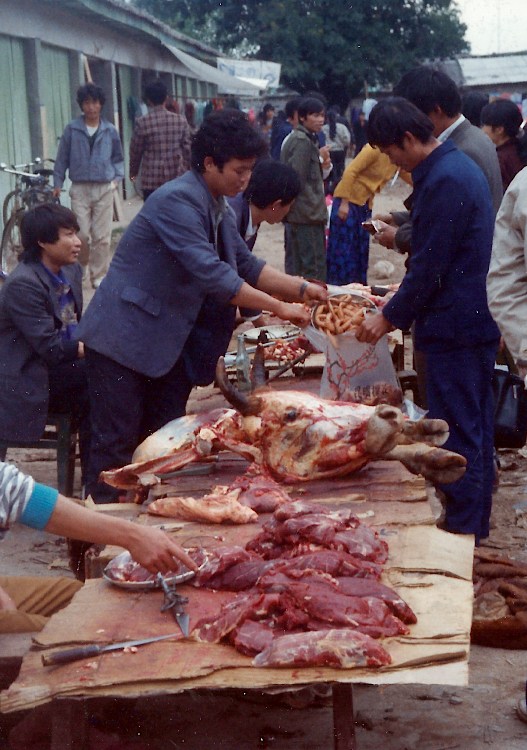
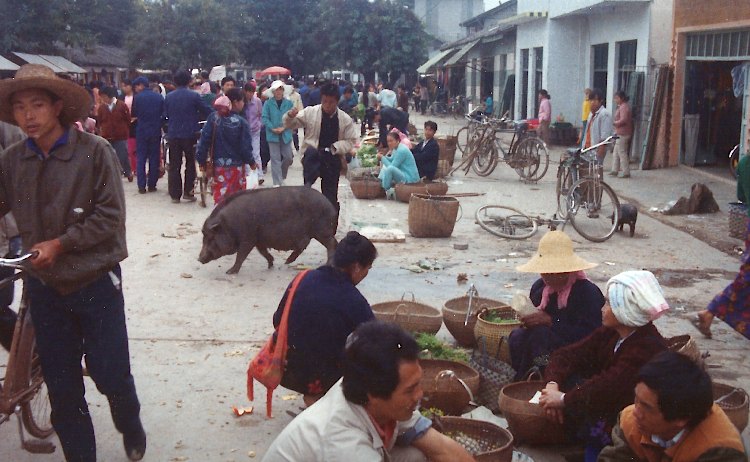
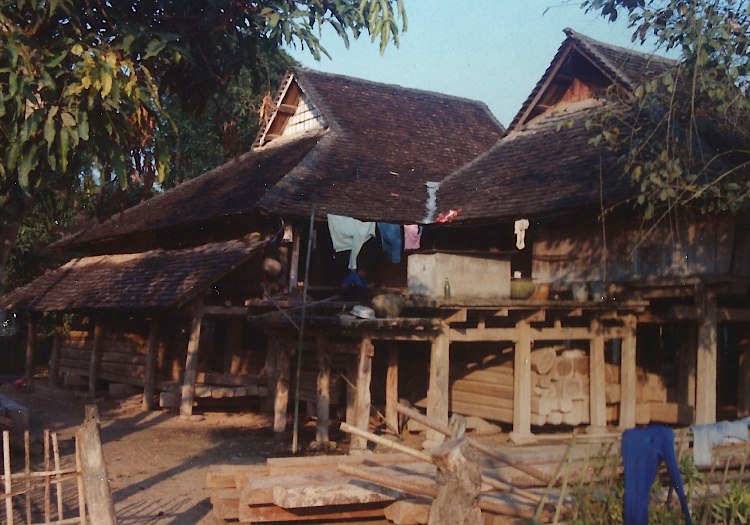
We spent another day or two in Jinghong. On one of those days cycling up to the ManFei Lang reservoir not far out of town. Thankfully this time the bicycles didn’t fall apart.
And before we knew it we were back on the plane to Hong Kong. We had a great trip – lots of fresh air and plenty of exercise. Of course in those days, the guidebook was rather thin and very few people spoke any English, so we probably missed out on a lot of interesting places and sights. Interestingly enough, back Jinghong we met the bloke who was writing the Lonely Planet for the area. We certainly were tourist pioneers getting there before the LP.



